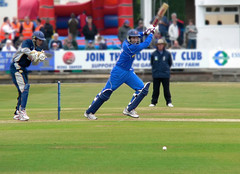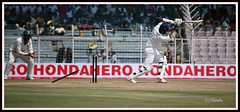How to make sure your club cricket team has a Shane Warne or Glen McGrath
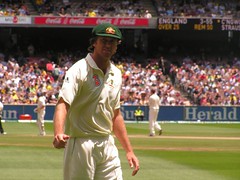
 photo credit: thribble
photo credit: thribbleHas your side ever badly needed a wicket to win turn a game back your way?
For many years Warne and McGrath the 'turn to' men for Australia. In times of trouble all Ricky Ponting had to do was toss the ball to one of them and let chaos ensue. Between them they took over 2000 International wickets.
Why everyone wants to bat in the middle order (and what to do about it)
Aussie View: Selecting a club batting line up
Brisbane cricketer, Simon Eggins is back with his view on club cricket from the other side of the world.
Getting the right batting order can be a tough job for a club captain.
Sometimes it's useful to experiment with different possibilities. Batsmen generally perform better when given the chance to get comfortable batting in one spot for an extended period.
5 ways to think faster on the field
If you have ever captained at any level you know how fast cricket can move even if things seem to be going slowly.
The ability to think fast is vital. If you can process a large amount of game information and turn it into a relevant tactical move in a ball or two rather than an over or two it stands to reason you will win more games.
Aussie View: A Third Man – Are You Crazy?
I'm delighted to welcome a brand new contributor: Brisbane cricketer, Simon Eggins. Simon will be providing a regular view on the club game from Down Under. Inspired by a discussion he had with his captain, Simon tells us about the merit of using a third man in the early stages of a game.
 Picture this situation in a typical unlimited overs game. Your team is bowling on the morning of the first day having lost the toss, and after 15 or so overs when you come off for the first drinks break you check the scorebook to find that the opposition is 1/40 (or 40/1 if you're not in Australia) – a disappointing result given your side's total dominance so far. Your opening bowlers have done brilliantly, getting the ball consistently in good areas and moving it away from the right handers, there's been play and miss after play and miss and balls falling just short of the slips, with only a lone edge going to hand. With the exception of one majestic off drive, very little has been hit successfully off the square.
Picture this situation in a typical unlimited overs game. Your team is bowling on the morning of the first day having lost the toss, and after 15 or so overs when you come off for the first drinks break you check the scorebook to find that the opposition is 1/40 (or 40/1 if you're not in Australia) – a disappointing result given your side's total dominance so far. Your opening bowlers have done brilliantly, getting the ball consistently in good areas and moving it away from the right handers, there's been play and miss after play and miss and balls falling just short of the slips, with only a lone edge going to hand. With the exception of one majestic off drive, very little has been hit successfully off the square.
What makes a great cricket captain?
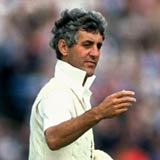 Everyone knows a good captain, but not everyone knows how they became one. That's the mystery of leadership. However, many have studied the phenomenon of great leaders and we as cricketers can tap that knowledge.
Everyone knows a good captain, but not everyone knows how they became one. That's the mystery of leadership. However, many have studied the phenomenon of great leaders and we as cricketers can tap that knowledge.
In short, understanding the principles behind leadership will help you to become a better captain or coach.
Is it possible to plot a batting collapse?
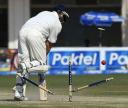
"Bowling sides should have a set of pre-determined plans about how to initiate and maintain an incipient batting collapse: Which bowlers will be used in what order, what will be their role, what field settings are most helpful, optimum rate of overs, and the psychology of inducing 'mental disintegration' among the incoming batters.
How great captains deal with bowlers
There is a critical balance of authority between captains and their bowlers. Good skippers know how to manage this and get the best from their wicket takers.
Generally the captain has authority over the bowler when it comes to tactical decisions on the field. Often this can get a lot more complex. Senior bowlers like to set their own fields or take the new ball, especially with junior captains. Captains are trying to look at the bigger picture and may often disagree with tactics the bowler wants.
Does your team talk?
Any club cricket team that talks well with each other has an instant advantage over the opposition. Does your team know how to do it?
The advantage comes from the transient way that club teams work. Players go in and out of sides and line ups change regularly from week to week. This makes it hard to gel everyone together naturally.

